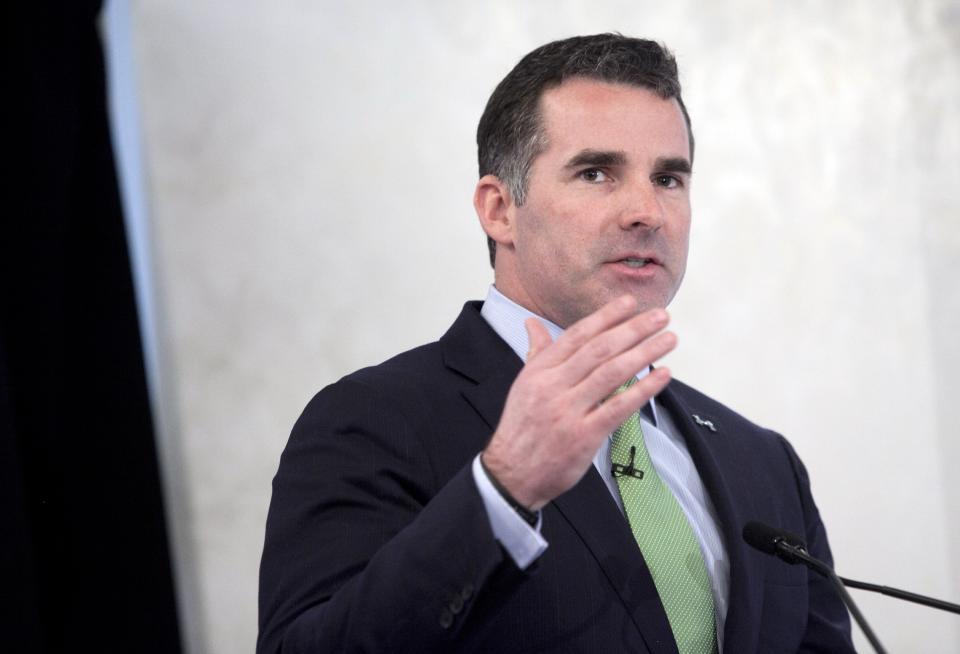Under Armour: We have to be a premium full-price brand
A stunning Under Armour financial streak just ended. The Baltimore-based sports apparel company had delivered 26 straight quarters of 20% or higher sales growth—until now.
Under Armour missed big on its 2016 fourth quarter earnings, reporting revenue of $1.31 billion on expectations of $1.41 billion, and earnings of 23 cents per share on expectations of 25 cents.
The problem was North America, where sales grew 5.9% in the quarter, a far cry from its average quarterly growth of nearly 25% for the past three years. Now longtime CFO Chip Molloy is resigning, the company announced.
Even worse: Under Armour now says it expects operating income to fall by $100 million for 2017. “So the natural question,” CEO Kevin Plank said on the earnings call, “is why? Why is operating income going backwards?”
There are a few answers. For starters, the bankruptcies last year of major US sports retail chains, like Sports Authority, Golfsmith, Eastern Mountain Sports, Bob’s Stores and Sports Chalet, crushed many sports brands. As Plank said, that’s “certainly not new news,” but it “disrupted the North American retail landscape.” Plank was among a number of CEOs to have breakfast with President Donald Trump on his first weekday in office.

Because 85% of Under Armour’s global revenue comes from North America, it is particularly affected (more so than Nike or Germany-based Adidas) by shifts in the US retail scene. “But we have momentum toward greater global balance,” Plank assured investors.
In addition, competition from other brands is tougher than ever, especially from Adidas, which had an excellent 2016 and managed to claw back market share in US footwear. Back in 2014, Under Armour took the No. 2 spot from Adidas in US apparel; last year, Adidas took it back. Adidas is flying just as Under Armour is flailing.
But most compelling of all, Plank said Under Armour has learned that it must stay premium to win at retail stores—that is, avoid being sold in discount environments. “The role both we and our retailers expect us to play is as a premium, full-price brand,” Plank said. “This means amplifying our agenda for newness and innovation at every price point, as our partners expect UA to be the premium brand of choice at their stores.”
The sneaker business is actually a mostly full-price business. At stores like Dick’s Sporting Goods and Foot Locker, sneakers are mostly sold at the brand’s suggested retail price. But every brand also sells to discount stores like Marshalls, and at a discount at their own outlet stores.
To keep a premium image like Plank wants, says NPD Group retail analyst Matt Powell, “You don’t put too much inventory in the marketplace. It’s not a matter of telling retailers you can’t price-promote [sell at a discount], it’s controlling your inventory at a point where they don’t need to promote.”
Staying premium also means continuing to focus on athleisure—a term Plank very clearly does not like, and often avoids using. On its 2016 third-quarter earnings call in October, Plank downplayed the trend, saying, ““It’s not about what people are conveniently referring to as ‘athleisure.’ It’s the simple truth that people around the world are raising what they expect from athletic apparel.”
On Tuesday’s call, Plank came up with an alternative term: “athletic inspiration.” Plank said that while “performance is certainly not dead,” referring to performance apparel (gear specifically for playing sports), more brands than ever “are participating in this ‘athletic inspiration.’ And they are heavily discounting as well. We need to become more fashionable with the products we have out there.”
Translation: athleisure is still as big as ever, it isn’t going anywhere, and within that context, Under Armour needs to stay upscale and premium. So the next time you’re at your local sports apparel store, expect to see more fresh Under Armour products than before, and at full prices.
—
Daniel Roberts is a writer at Yahoo Finance, covering sports business, media and technology. Follow him on Twitter at @readDanwrite.
Read more:
How Under Armour has delivered 25 straight quarters of 20% revenue growth
Under Armour, UCLA, and why the biggest college sports deal ever isn’t such a big deal
Adidas calls Under Armour’s athletes ‘milquetoast’
Athletes of Valor aims to turn military veterans into college athletes

